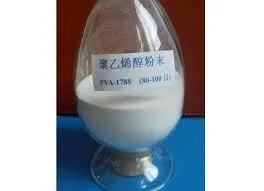The Role of Cellulose Paint Thickeners in Modern Coatings
In the world of coatings and paints, achieving the perfect consistency is essential for both application and performance. One of the most effective solutions for modifying the viscosity of paints is the use of cellulose-based thickeners. These natural polysaccharides, derived from plant fibers, have gained popularity in formulations for various reasons, including their environmental friendliness and ability to enhance the overall performance of paint products.
What is Cellulose?
Cellulose is a complex carbohydrate and a key structural component of plant cell walls. When derived and processed into a thickener, cellulose can be tailored to meet specific requirements in coating applications. Cellulose thickeners, such as hydroxypropyl methylcellulose (HPMC) or carboxymethyl cellulose (CMC), have unique properties that make them ideal for use in both water-based and solvent-based paints.
Why Use Cellulose Thickeners?
1. Viscosity Control One of the primary functions of cellulose thickeners is to adjust and stabilize the viscosity of paint formulations. This is crucial in ensuring that paints maintain a consistent texture throughout the application process. A well-thickened paint reduces the risk of sagging or dripping on vertical surfaces, leading to a smoother finish.
2. Improved Application Properties Cellulose thickeners improve the workability of paints, allowing for easier application with brushes, rollers, or sprays. Paints thickened with cellulose flow better, ensuring an even distribution without excessive splatter.
cellulose paint thickener

3. Enhanced Performance Besides influencing the viscosity, cellulose thickeners can improve various properties of paints, such as adhesion, film-forming ability, and durability. This makes them valuable in formulations aimed at high-performance applications, including industrial coatings and decorative paints.
4. Eco-Friendly Option With the growing concern over environmental sustainability, cellulose thickeners are an attractive alternative to synthetic thickeners. Being derived from renewable resources, they contribute to reducing the environmental footprint of paint manufacturing processes. Moreover, many cellulose thickeners are biodegradable, aligning with the increasing demand for eco-friendly products in the paint industry.
5. Tolerance to Electrolytes Cellulose thickeners demonstrate good tolerance to electrolytes, which allows them to be used in a variety of formulations, including those containing salts or other ionic compounds. This broadens their applicability across different types of coatings.
6. Thermal and Shear Stability These thickeners exhibit excellent stability under varying temperature and stress conditions, ensuring that paint formulations remain consistent whether they are stored for long periods or subjected to rigorous application methods.
Conclusion
In conclusion, cellulose thickeners play a vital role in the formulation of modern paint products, providing crucial benefits such as improved viscosity control, application properties, and environmental sustainability. Their ability to enhance the performance and durability of paints makes them an indispensable component in the coatings industry. As manufacturers continue to innovate and respond to market demands for eco-friendly options, cellulose-based thickeners are likely to see an even broader application, making them a key player in the future of paint technology. Whether for residential, commercial, or industrial applications, the versatility and effectiveness of cellulose thickeners are becoming increasingly recognized, heralding a new era in environmentally conscious paint solutions.
-
Rdp that The Revolutionary Polymer Powder Transforming Modern Construction MaterialsNewsAug.11,2025
-
Hpmc Powder that Versatile Additive for Detergents and Personal CareNewsAug.11,2025
-
Hpmc Hydroxypropyl Methylcellulose that Essential Building Material Additive from Shijiazhuang Gaocheng YongfengNewsAug.11,2025
-
Hydroxypropyl Methyl Cellulos Hpmc that Essential for Construction ApplicationsNewsAug.11,2025
-
Mhec Powder that Revolutionizing Construction Chemistry with Cellulose Ether SolutionsNewsAug.11,2025
-
Industri Hpmc that The Global Backbone of Advanced ConstructionNewsAug.11,2025




